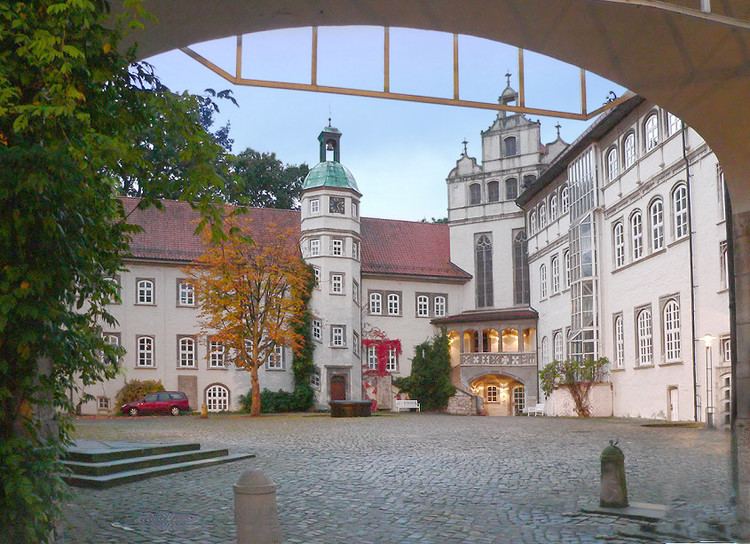District Gifhorn Time zone CET/CEST (UTC+1/+2) Population 41,799 (31 Dec 2008) Dialling code 05371 | Elevation 50 - 68 m (−173 ft) Area 104.9 km² Local time Monday 9:53 PM | |
 | ||
Postal codes 38501–38510, 38516, 38518 Weather 5°C, Wind W at 2 km/h, 80% Humidity Points of interest International Wind‑ and Watermill, Gifhorn Castle, Die Brücke, Internationales Mühlenmuseum Gifhorn, Ise | ||
Gifhorn ( [ˈɡɪfhɔʁn]) is a town and capital of the district of Gifhorn in the east of Lower Saxony, Germany. It has a population of about 42,000 and is mainly influenced by the small distance to the more industrial and commercially important cities nearby, Brunswick and Wolfsburg. Further, Gifhorn is part of the Hanover-Brunswick-Göttingen-Wolfsburg Metropolitan Region.
Contents
- Map of 38518 Gifhorn Germany
- Geography
- History
- Education
- Transport
- International relations
- The Bells Palace
- Sons and daughters of the city
- References
Map of 38518 Gifhorn, Germany
The oldest verifiable source attests the existence of the city in the year 1196.
Gifhorn is home to the International Wind- and Watermill Museum, which contains a comprehensive collection and working replicas of the world's most common windmills.
Geography
Gifhorn lies at the confluence of the Rivers Ise and Aller. Gifhorn is situated about 20 km (12 mi) north of the city of Brunswick and about 15 km (9 mi) west of Wolfsburg. In the city, the Bundesstraße 4 and 188 meet. At the northern end of the city, the Lüneburg Heath starts.
History
Gifhorn was first mentioned in 1196. It was located at the crossing of two then important merchant routes: The salt street (German: Salzstraße) being a main trading route for salt between Lüneburg and Brunswick, and the grain street (German: Kornstraße) transporting grain between Celle and Magdeburg.
Education
Schools in Gifhorn include the Humboldt Gymnasium, the Otto-Hahn-Gymnasium, Fritz-Reuter-Realschule, Dietrich-Bonhoeffer-Realschule, Albert-Schweitzer-Hauptschule and the Berufsbildenden Schulen I and II. Alfred-Teves-Schule, which was called Volksschule Süd between 1954 and 1958, was open between 1954 and 2010.
Transport
The Gifhorn rail station is in the southern part of the town.
In the city, the Bundesstraße 4 and 188 meet.
International relations
Gifhorn is twinned with:
The Bells Palace
Glocken-Palast, or The Bells Palace, is a monument and large building in Gifhorn. It was completed after 16 years of construction, combining various Russian timber building styles. Its cornerstone was laid by former Russian president Mikhail Gorbachev in 1996.
It was built as a centre to promote cultural exchange across Europe, following the fall of the Iron Curtain.
The Bells Palace will host events and exhibitions celebrating peace, freedom and cultural diversity.
